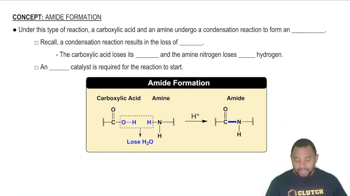Draw structures of the carboxylic acids and alcohols you would use to prepare each ester in Problem 17.54.
a.
b.
c. Cyclohexyl acetate
d. Phenyl-o-hydroxybenzoate
 Verified step by step guidance
Verified step by step guidance Verified video answer for a similar problem:
Verified video answer for a similar problem:



 1:5m
1:5mMaster Ester Reactions: Esterification Concept 1 with a bite sized video explanation from Jules
Start learning